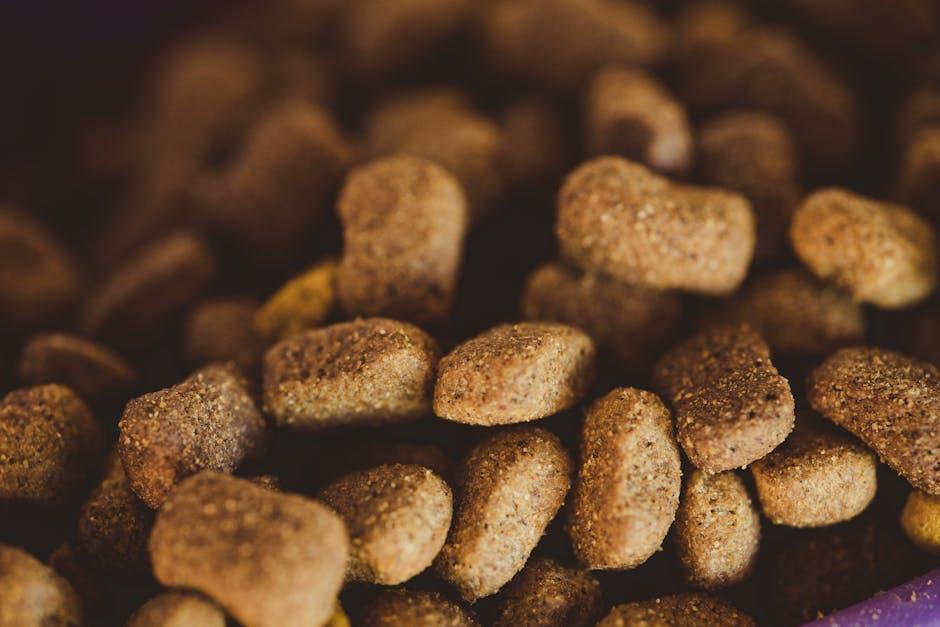Bringing a new puppy into your home is a joyous occasion filled with playful antics, wagging tails, and boundless energy. As you embark on this heartwarming journey, one of the most important responsibilities you’ll have is ensuring your furry friend receives the right nutrition to support their growth and development. Just like human babies, puppies have unique dietary needs that evolve as they grow. In this guide, we’ll walk you through the essential steps to adjust your puppy’s feeding regimen, ensuring they thrive at every stage of their young life. Whether you’re a first-time puppy parent or a seasoned dog lover, our warm, step-by-step approach will help you nourish your new companion with confidence and care.
Choosing the Right Nutritional Plan for Your Growing Puppy
When it comes to feeding your puppy, the right nutritional plan is crucial to ensure they grow up healthy and strong. Puppies have different dietary needs compared to adult dogs, so it’s important to tailor their diet as they grow. Here are some essential tips to guide you in selecting the best plan:
- Understand Breed-Specific Needs: Different breeds grow at different rates and have varying nutritional requirements. Larger breeds, for example, need controlled calcium and phosphorus levels to support healthy bone development.
- Choose High-Quality Puppy Food: Look for foods specifically formulated for puppies, rich in essential nutrients such as protein, DHA, and antioxidants. These ingredients support brain development, immune function, and muscle growth.
- Monitor Growth and Adjust Portions: Regularly weigh your puppy and adjust their food portions accordingly. Overfeeding can lead to obesity, while underfeeding might stunt their growth.
- Consult Your Veterinarian: Your vet can provide personalized advice based on your puppy’s specific needs, helping you make informed decisions about their diet.
By being attentive to your puppy’s dietary needs and making adjustments as they grow, you set the foundation for a lifetime of good health and vitality.

Understanding Portion Sizes: When and How Much to Feed
As your puppy grows, understanding the right portion sizes becomes crucial to ensure they receive the nutrition they need without overfeeding. Puppies have different dietary needs compared to adult dogs, and their feeding amounts should adjust accordingly. Here are some key considerations to keep in mind:
- Age and Breed: The nutritional needs of your puppy will change as they age. Smaller breeds tend to reach maturity faster than larger breeds, so their feeding schedule will differ. Regularly consult with your vet to tailor the portion sizes to your puppy’s specific breed and growth rate.
- Activity Level: More active puppies will naturally burn more calories, necessitating larger portion sizes or more frequent meals. Conversely, less active puppies may require smaller portions to prevent excess weight gain.
- Food Quality: The caloric density and nutritional content of the food you choose will impact how much you should feed your puppy. Higher quality foods often require smaller portions because they provide more nutrients per serving.
By closely monitoring your puppy’s growth and adjusting their portions as needed, you can help ensure they develop into healthy, happy adult dogs. Always provide fresh water alongside meals and be mindful of their overall condition to make any necessary changes to their diet.

Introducing New Foods: Transitioning Your Puppy’s Diet
Transitioning your puppy’s diet to include new foods is an essential part of their growth journey. As your furry friend develops, their nutritional needs will change, requiring a shift in their diet to support their evolving body. Here are some tips to ensure a smooth transition:
- Introduce Gradually: Start by mixing a small amount of the new food with their current diet. Gradually increase the proportion of new food over a week or so, allowing their digestive system to adjust.
- Monitor Reactions: Keep an eye on your puppy for any signs of allergies or digestive issues, such as vomiting or diarrhea. If these occur, slow down the transition or consult your veterinarian.
- Balance is Key: Ensure that the new diet provides a balanced mix of proteins, fats, and carbohydrates, along with essential vitamins and minerals.
- Stay Hydrated: Always provide plenty of fresh water, as changes in diet can affect hydration levels.
Remember, every puppy is unique, and their dietary needs may differ. Consult your vet for personalized advice to ensure your puppy grows up healthy and strong.
Monitoring Growth and Health: Adjusting Feeding Habits
As your puppy grows, it’s essential to keep a close eye on their development to ensure they’re getting the right nutrition. Adjusting feeding habits is not just about increasing the amount of food but also about paying attention to the quality and type of nutrients. Puppies have different dietary needs at various stages of their growth, and these needs can change rapidly. Observing your puppy’s body condition, energy levels, and overall health can give you valuable insights into whether their current diet is meeting their needs.
- Watch for growth spurts: During rapid growth phases, puppies may require more calories and nutrients. This is the time to consider increasing their food intake or switching to a diet with higher protein content.
- Monitor weight and adjust portions: Regularly check your puppy’s weight and body condition. If they are gaining too much weight, you might need to reduce their portions or choose a lower-calorie option.
- Consider their breed and activity level: Different breeds have varying growth rates and energy levels. Active breeds might need more food compared to less active ones.
By staying attuned to your puppy’s needs and making thoughtful adjustments, you can help ensure they grow into a healthy and happy adult dog. Remember, when in doubt, consulting with your veterinarian can provide tailored advice to meet your puppy’s unique nutritional requirements.
















